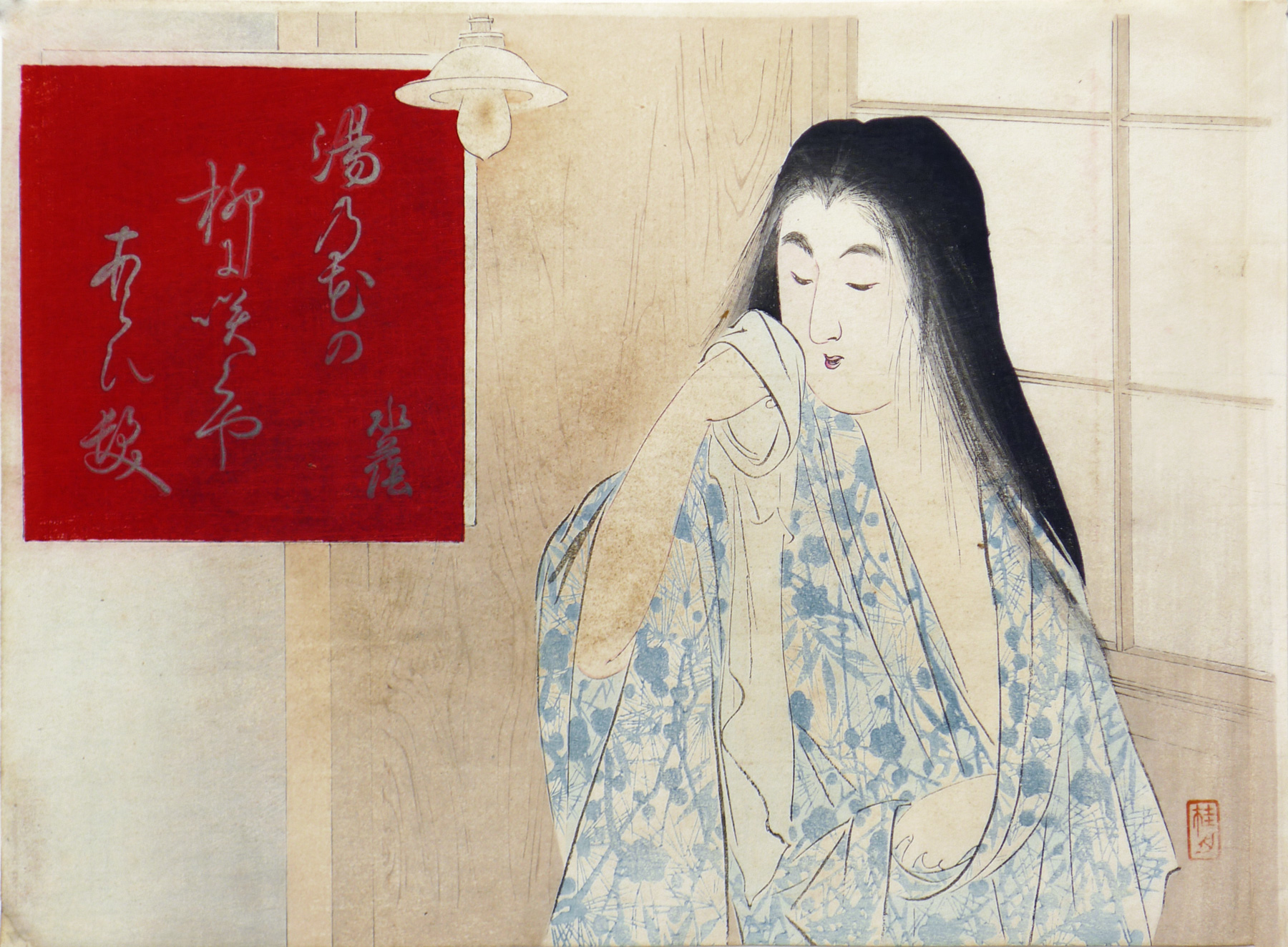About This Print
Scene showing a young woman in her summer robe (yukata) drying herself after bathing. This print was the frontispiece for volume 7, no. 5 of the literary magazine Bungei Kurabu (Literary Arts Club), published in Meiji 34th year (1901) which carried, either in its entirety or a portion thereof, the novel Rakkaroku 落花録 (Memoirs of Fallen Blossoms) by the writer Suiin Emi (1869-1934).The Literary Magazine Bungei Kurabu
Bungei Kurabu 文芸倶楽部 was a very popular literary magazine published from 1895-1933 by Hakubunkan. It was one of the most dominant venues for Meiji literature, publishing noted authors such as Izumi Kyôka, Kunikida Doppo, Higuchi Ichyô, and Kawakami Bizan. In the magazine's later years, post 1907, it became a less elevated popular entertainment magazine.Print Details
| IHL Catalog | #531 |
| Title | Memoirs of Fallen Flowers Rakkaroku 落花録 (also seen translated as Recording Fallen Flowers) After the Bath (this is the common name for this print) |
| Series | frontispiece from Bungei Kurabu 文藝倶楽部 vol.7, no.5. |
| Artist | Takeuchi Keishū (1861-1942) |
| Signature | not signed |
| Seal | Keishu |
| Publication Date | 1901 |
| Publisher | Hakubunkan (publisher of Bungei Kurabu) |
| Printer | likely Yoshida Ishimatsu (1866-1924)1 |
| Impression | excellent |
| Colors | excellent |
| Condition | good - moderate spotting; two flattened vertical folds resulting from the manner in which this frontispiece was inserted in the publication |
| Genre | ukiyoe, kuchi-e |
| Miscellaneous | |
| Format | |
| H x W Paper | 8 5/8 x 11 7/8 in. (21.9 x 30.2 cm) |
| Collections This Print | The Metropolitan Museum of Art JP3293; National Library of Australia 5744705; Honolulu Museum of Art 27977 |
| Reference Literature | The Arts of Meiji Japan 1869-1912: Changing Aesthetics, Barry Till, Art Gallery of Greater Victoria, 1995, p. 83, pl. 1.20. |
1 According to Merritt in Woodblock Kuchi-e Prints: Reflections of Meiji Culture (p. 11-12), Keishu hired Ichimatsu at Hakubnkan where he printed kuchi-e and became the head printer until the magazine stopped issuing color woodblock prints.


